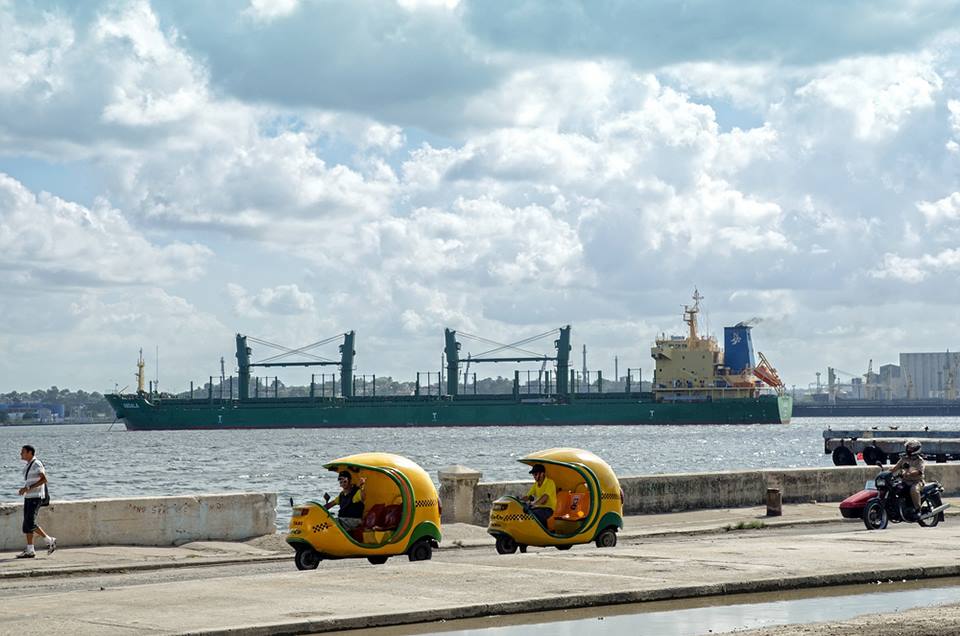IN US THOUSANDS OF CUBANS FACING DEPORTATION TO CUBA.
Tens of thousands of Cubans living in the United States and have outstanding deportation orders fear being repatriated to the island as the two governments prepare to restore full diplomatic relations, including the reopening of embassies for the first time in 54 years.
No less than 25,000 Cubans on US soil have deportation orders, police said Immigration and Customs Enforcement (ICE), AP reports.
These include people with serious criminal convictions or who pose a threat to national security and therefore are considered priority for deportation by the officials responsible for enforcing the immigration laws.
These immigrants have not yet been repatriated to Cuba because the government in Havana has not given them permission to return. It is unclear whether the Cuban government change its position.
Sisi, a grandmother of 50 who arrived in Miami with his family when he was four, is one of the people waiting and wondering what the future holds.
In the 1980s, when she was a teenager, Sisi married a man involved in the cocaine trade in South Florida. By the middle of the decade, she also participated in the business, until purged two and half years and ended his brief life of crime in 1989.
Although he paid off his debt to society, I knew that because of his criminal record authorities would issue a deportation order in 2000.
“I was young and stupid. That hurt me,” Sisi, who spoke on condition of being identified only by his nickname because of the deportation order said.
For decades, the deportation to Cuba has been hampered by the lack of diplomatic relations and the Cuban government’s decision not to issue documents to most of those facing deportation.
A repatriation agreement of 1984 includes a list of 2,746 people who had come to the United States during the Mariel boatlift and should be deported. The mass migration began when then-President Fidel Castro said that anyone who wanted to leave the island could do. Some 125,000 Cubans embarked on the dangerous journey between April and October 1980.
ICE files reveal that 1,999 people on the list have been repatriated, 1,093 of them since 2001. The ICE is responsible for finding and deporting immigrants living in the country without authorization and those who have been ordered to leave the country.
Deportation orders weighed on over 35,000 Cubans and the end of March 2300 have other deportation cases pending before the courts. Of these, 25,000 are priority due to criminal records or other problems in their past.
Agencies / DDC / InternetPhotos / www.thecubanhistory.com
The Cuban History, Hollywood.
Arnoldo Varona, Editor.
EN EEUU MILES DE CUBANOS EN PELIGRO DE DEPORTACIÓN A CUBA.
Decenas de miles de cubanos que viven en Estados Unidos y tienen órdenes de deportación pendientes temen ser repatriados a la Isla mientras ambos gobiernos se aprestan a restablecer relaciones diplomáticas plenamente, incluso con la reapertura de embajadas, por primera vez en 54 años.
Nada menos que 25.000 cubanos en suelo norteamericano tienen órdenes de deportación, según la policía de Inmigración y Aduanas (ICE), informa AP.
Estos incluyen a personas con condenas penales graves o que representan una amenaza para la seguridad nacional y por lo tanto son considerados prioritarios para deportación por parte de los agentes encargados de hacer cumplir las leyes de inmigración.
Esos inmigrantes todavía no han sido repatriados a Cuba porque el Gobierno de La Habana no les ha dado permiso para regresar. No está claro si el Gobierno cubano modificará su posición.
Sisi, una abuela de 50 años que llegó a Miami con su familia cuando tenía cuatro años, es una de las personas que espera y se pregunta qué les depara el futuro.
En la década de 1980, cuando era una adolescente, Sisi se casó con un hombre implicado en el tráfico de cocaína en el sur de Florida. Para mediados de la década, ella también participaba del negocio, hasta que purgó dos años y medio de cárcel y puso fin a su breve vida delictiva en 1989.
Aunque saldó su deuda con la sociedad, no sabía que debido a su prontuario criminal las autoridades emitirían una orden de deportación en el 2000.
“Era joven y tonta. Eso me perjudicó”, dijo Sisi, que habló bajo la condición de ser identificada sólo por su sobrenombre debido a la orden de deportación.
Durante décadas, la deportación a Cuba se ha visto entorpecida por la falta de relaciones diplomáticas y la decisión del Gobierno cubano de no otorgar documentos a la mayoría de los que enfrentan la deportación.
Un acuerdo de repatriación de 1984 incluye una lista de 2.746 personas que habían llegado a Estados Unidos durante el éxodo de Mariel y deberían ser deportadas. La migración masiva comenzó cuando el entonces gobernante Fidel Castro dijo que cualquiera que quisiera abandonar la Isla podía hacerlo. Unos 125.000 cubanos se embarcaron en la peligrosa travesía entre abril y octubre de 1980.
Los archivos de ICE revelan que 1.999 personas en la lista han sido repatriadas, 1.093 de ellas desde 2001. La ICE es responsable de hallar y deportar a los inmigrantes que viven en el país sin autorización y a aquellos a quienes se ha ordenado abandonar el país.
Las órdenes de deportación pesan sobre más de 35.000 cubanos y hasta fines de marzo otros 2.300 tienen casos de deportación pendientes ante las cortes. De estos, 25.000 son prioritarios debido a prontuarios delictivos u otros problemas en su pasado.
Agencies/DDC/InternetPhotos/www.thecubanhistory.com
The Cuban History, Hollywood.
Arnoldo Varona, Editor.



 IN UNITED STATES Thousands of Cubans Facing Deportation to Cuba. *** En Estados Unidos Miles de Cubanos en Peligro de Deportación a Cuba.
IN UNITED STATES Thousands of Cubans Facing Deportation to Cuba. *** En Estados Unidos Miles de Cubanos en Peligro de Deportación a Cuba.

